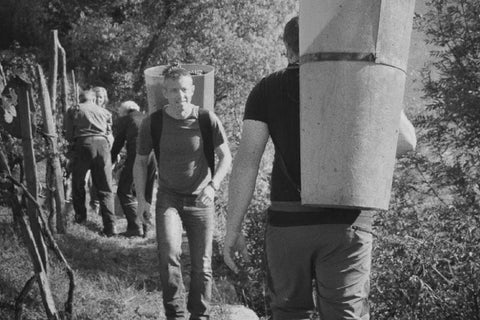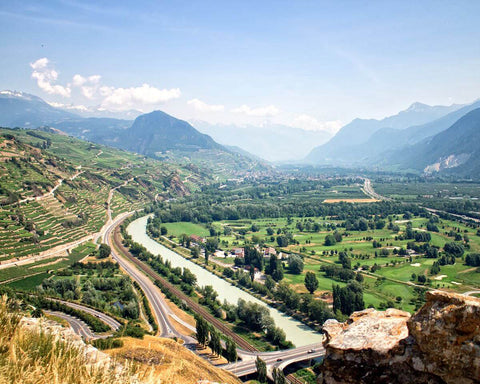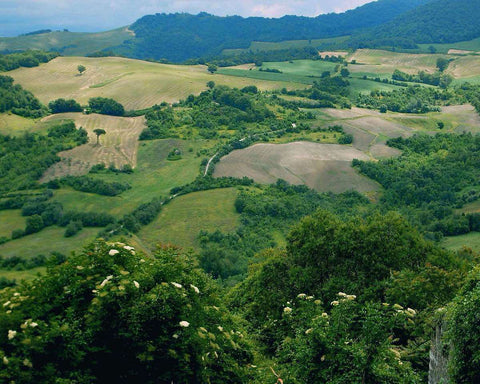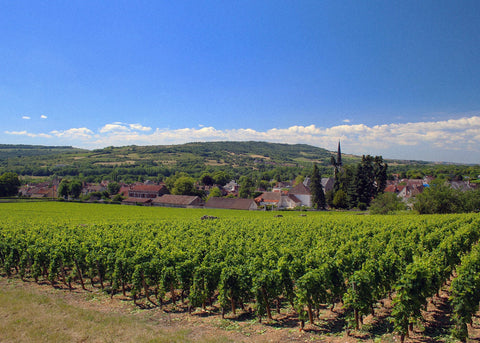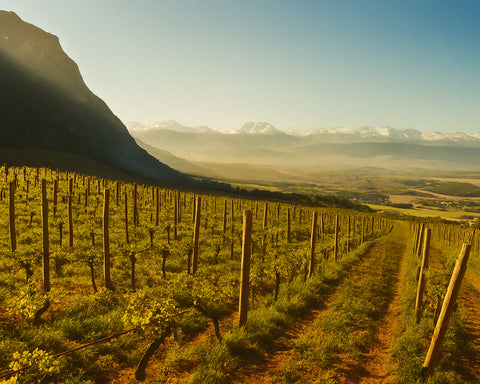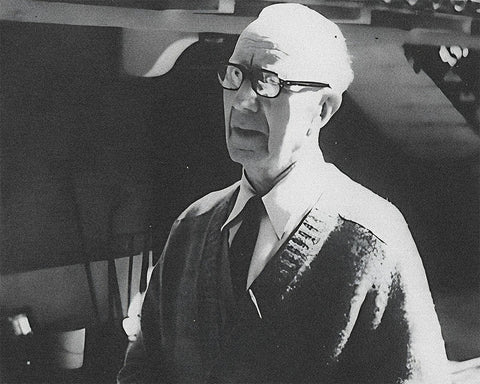Barolo is Italy’s most intricate red—100% Nebbiolo—born on a mosaic of marl and sandstone in the Langhe. This guide covers history, geology, communes & MGAs, producer styles, vintages, service, and buying strategy.
“Barolo is not big because it is strong; it’s big because it is intricate.”
1) Introduction: Why Barolo Matters
Barolo is a pale, iron-fisted red made exclusively from Nebbiolo in the Langhe hills south of Alba. Its hallmarks are high tannin, high acidity, and astonishing perfume—rose petal, cherry, anise, dried citrus peel, tar, truffle, menthol—shaped primarily by site and season.
Nicknamed the “King of Wines, Wine of Kings,” Barolo fuses fragrance and finesse with architecture and ageability. While “tar and roses” is the cliché, the spectrum runs wider: rose and sour cherry through licorice, iron, bitter orange, porcini, and mint.
Barolo vs. Barbaresco (very short): Barbaresco sits lower, warms earlier, and mandates shorter aging; its tannin profile is often silkier. Barolo typically shows more structure and needs more time—though producer and site trump generalizations.
2) Geography, Topography & Mesoclimate
- Comuni: 11 total. West/NW (La Morra, Verduno): higher Tortonian marls—lift, perfume, softer tannins. East/SE (Serralunga, Monforte): older Serravallian formations—darker fruit, iron-tinged minerality, firm frames. Center (Barolo, Castiglione Falletto): classic balance.
- Altitude & aspect: govern ripeness and tannin maturity; diurnal swings retain acid and aromatics.
- Autumn fog: late-ripening Nebbiolo meets October decision-making.
- Climate change: earlier harvests, riper tannins → more youthful charm; canopy and soil strategies mitigate heat/drought; the east–west style gap is compressing but persists.
3) Geology & Soils
- Tortonian marls (bluish, calcareous, compact): finesse, fragrance, earlier approachability.
- Serravallian/Helvetian sandstones & marly sands (older, sand-rich): power, verticality, long aging arcs.
- Soil depth & water: drainage and clay proportion shape tannin grain (from chalk-dusty to blocky) and fruit weight; Ca/K balance influences perceived bitterness/roundness.
“In Barolo, geology is not a backdrop; it’s the script.”
4) The Communes & Their Signatures (with key MGAs)
MGAs = legally defined geographic mentions (since 2010); they map place, not guaranteed quality.
La Morra
Signature: lift, perfume, red-toned fruit, supple tannins. Key MGAs: Rocche dell’Annunziata, Brunate* (shared), Cerequio* (shared), Arborina.
Barolo (village)
Signature: equilibrium—fragrance meets structure. Key MGAs: Cannubi (and sub-hills), Sarmassa, Coste di Rose, Liste.
Castiglione Falletto
Signature: tensile, filigreed power; red fruit over iron. Key MGAs: Rocche di Castiglione, Villero, Monprivato, Bricco Fiasco.
Monforte d’Alba
Signature: depth, dark fruit, firm frames; long horizons. Key MGAs: Bussia (vast, varied), Ginestra, Gramolere, Bricco San Pietro.
Serralunga d’Alba
Signature: iron-spined, mineral, epic ageability. Key MGAs: Vignarionda, Lazzarito, Francia, Margheria, Falletto.
Novello
Signature: tension with depth; rising star. Key MGA: Ravera.
Verduno
Signature: high-toned spice (white pepper, mint), silk. Key MGA: Monvigliero.
*Shared across communes. Smaller contributors include Cherasco, Diano d’Alba, Grinzane Cavour, Roddi—fewer MGAs but occasional gems.
5) How to Read MGAs on Labels
- What MGAs are: official geographic names allowed on labels; they indicate place, not a quality tier.
- Single-vineyard vs. blends: some icons blend for balance; others bottle MGA purity to express micro-terroir.
- Label literacy: watch the commune, MGA, Riserva (longer aging), and historic parcel names vs. broader MGAs.
6) Viticulture
- Genetics: massal selections preserve fine-grained tannin and perfume; small-berried clones concentrate phenolics.
- Training & density: Guyot variants; density to curb vigor on fertile pockets.
- Canopy: calibrated shade to avoid sunburn while ripening seeds/skins; late leaf-pulling in hot years.
- Soils: living cover, erosion control on steep marl; organic/biodynamic practices are increasingly common.
- Harvest: sugar ≠ phenolic ripeness; monitor seed lignification, rain windows, botrytis pressure.
7) Winemaking: Tradition to Post-Modern
- Fermentation: Traditional long macerations (20–45+ days), cappello sommerso, ambient yeasts; modernist tools include shorter macerations, rotofermenters, and temperature control for polish.
- Élevage: Large neutral botti (oxygen without flavor) vs. barrique/tonneaux (texture smoothing—must integrate without masking place).
- Finishing: malo management, careful rackings, modest SO₂, light filtration or none.
“Great Barolo should smell of hillside and season, not cooperage.”
8) DOCG Rules & Aging
- Barolo: minimum 38 months from Nov 1 of the harvest year, including at least 18 months in wood.
- Barolo Riserva: minimum 62 months from Nov 1 of the harvest year, including at least 18 months in wood.
Alcohol minimums and analytical parameters apply; style is not mandated.
9) Sensory Architecture
- Aromatics by sector: La Morra/Verduno → rose, cherry, anise, mint, white pepper; Serralunga/Monforte → darker cherry/black tea, iron, balsam, tar.
- Texture: tannin from chalk-dusty to blocky; acid forms the spine.
- Evolution: primary (5–8y) → floral/earth (8–15y) → truffle/leather/tea (15–30y+).
- Vintage vs. terroir: great sites speak across warm/cool seasons; cellar choices can amplify or blur place.
10) Vintages: Patterns & Perspective
Reference classics: 1996, 1999, 2001, 2004, 2006, 2008, 2010, 2013, 2016 for structure and finesse. Recent warm years often show earlier charm yet retain depth in east-slope sites. Read charts critically: producer choices and site water capacity can exceed headline weather effects.
11) Producer Styles (illustrative, non-exhaustive)
Tradition-leaning / botti-centric
Bartolo Mascarello, Giuseppe Rinaldi, Giacomo Conterno, Burlotto, Cappellano, Cavallotto, Oddero, Brovia, Brezza.
Hallmarks: minimal oak signature, long macerations, filigreed tannin, slow evolution.
Modernist / innovation drivers
Elio Altare, Paolo Scavino, Domenico Clerico, Luciano Sandrone, Renato Ratti (mapping pioneer), Vietti (precision, site focus; straddles styles).
Hallmarks: precision fruit, polished tannin; oak integration varies; earlier charm without losing core.
12) Buying, Cellaring & Drinking Strategy
- Choose by palate: perfume & silk → La Morra/Verduno; mineral power & longevity → Serralunga/Monforte; classic midpoint → Barolo/Castiglione Falletto.
- Decanting: young (≤10y) 2–6h; mature (15y+) splash or none—follow the glass.
- Service: large Burgundy stems; 16–18 °C (60–64 °F); avoid warm rooms.
- Storage: darkness, cool, steady; magnums age more slowly.
13) Food Pairing Intelligence
- Piedmontese canon: brasato al Barolo, agnolotti del plin, tajarin with ragù, porcini, white truffle.
- Texture logic: high tannin + high acid crave protein/gelatin/fat; avoid sweetness & intense chili heat.
- Age matters: youthful with roasted/grilled meats; mature with mushrooms, braises, poultry, aged cheeses.
14) Climate Change & Style
- Vineyard: shade retention, higher canopies, drought-tolerant rootstocks, cover crops for moisture.
- Cellar: cooler ferments, gentler extractions, neutral wood, earlier bottling for perfume.
- Outcome: more early-charm vintages, yet top sites still deliver depth and carry.
15) Barolo vs. Barbaresco & Other Nebbiolo
- Quality ladder: declassified Langhe Nebbiolo often previews house style and season.
- Barolo vs. Barbaresco: similar palette, different frames; Barbaresco generally opens earlier, but its best rivals Barolo in complexity.
- Nebbiolo d’Alba: broader source, typically easier tannins and earlier drinking.
16) Advanced Label & Map Literacy
- MGA size & scope: compact jewels (Monvigliero) vs. sprawling Bussia—do not assume sameness.
- Historic names: may appear alongside or instead of legal MGAs.
- Case studies: Cannubi (sub-hills, famed elegance), Bussia (diverse exposures), Monvigliero (silk, spice; whole-cluster-friendly fruit).
17) Visiting Barolo (Practical)
- When: late spring or post-harvest/truffle season; avoid peak crush for longer tastings.
- How: book appointments; expect tasting fees; buy direct when possible.
- What to see: ridge walks above Castiglione, Serralunga viewpoints, Cannubi crest, Alba’s market.
Appendix A — Commune-by-Commune MGA Snapshot
| Commune | Style Snapshot | Key MGAs (illustrative) |
|---|---|---|
| La Morra | Perfume, lift, supple tannins | Rocche dell’Annunziata; Brunate*; Cerequio*; Arborina |
| Barolo (village) | Balance of fragrance and frame | Cannubi (& sub-hills); Sarmassa; Coste di Rose; Liste |
| Castiglione Falletto | Tensile, filigreed power | Rocche di Castiglione; Villero; Monprivato; Bricco Fiasco |
| Monforte d’Alba | Depth, darker fruit, firm tannins | Bussia; Ginestra; Gramolere; Bricco San Pietro |
| Serralunga d’Alba | Iron-spined, mineral, long aging | Vignarionda; Lazzarito; Francia; Margheria; Falletto |
| Novello | Tension + depth | Ravera |
| Verduno | High-toned spice, silk | Monvigliero |
| Cherasco / Diano d’Alba / Grinzane Cavour / Roddi | Smaller footprints; occasional gems | Select parcels and border MGAs |
*Shared across communes.
Appendix B — Vintage Matrix (living table)
Use this to calibrate buying, drinking, and cellaring. “Structure” = tannin/acid frame; “Window” assumes proper storage for typical top producers (adjust for style and site).
| Year | Season Profile (Langhe) | Structure | Fruit/Voice | Drink Window (typical) | Notes & Tips |
|---|---|---|---|---|---|
| 2010 | Cool, long ripening | High, refined | Red cherry, rose, tea | 2020–2040+ | Benchmark classicism; patience rewarded. |
| 2013 | Classic, late | High, etched | Red fruit, floral, mineral | 2023–2040 | Filigree + drive; superb for east-slope lovers. |
| 2016 | Near-ideal balance | High but ripe | Pure, poised, crystalline | 2024–2045 | Modern “reference” for balance & transparency. |
| 2019 | Warm, not overripe | Firm, precise | Red/black cherry, spice | 2026–2040 | Energetic spine; excellent cellar candidate. |
| 2017 | Warm, dry | Moderate+ (softer acids) | Ripe red fruit, balsam | 2023–2032 | Approaches earlier; pick producers with restraint. |
| 2015 | Warm, generous | Moderate+ | Plush fruit, broader frames | 2022–2035 | Crowd-pleasing; shines in higher, breezier sites. |
| 2014 | Cool with wet patches | Moderate, fine | Red fruit, savory/herbal nuance | 2020–2030 | Heterogeneous; top growers deliver delicate charm. |
| 2008 | Classic, cooler edge | High, linear | Rose, citrus peel, tea | 2018–2035 | Underrated for lovers of definition. |
| 2004 | Cool-classic | High, elegant | Red fruit, floral, anise | 2015–2030 | Graceful maturity; aromatics peaking in many bottles. |
| 2001 | Structured, late | High, authoritative | Darker cherry, iron | 2012–2030+ | Old-school backbone; still vibrant at the top level. |
| 1996 | Cool, tannic | Very high | Lean, herbal, iron | 2010–2030 | For traditionally minded palates; time and air needed. |
Appendix C — Service & Pairing Cheat Sheets
Service Quick-Hits
- Glass: large Burgundy bowl.
- Temperature: 16–18 °C (60–64 °F).
- Decanting: young 2–6h; mature minimal; always monitor evolution.
Pairing Quick-Hits
- Youthful: grilled/roasted beef, lamb, game.
- Mid-maturity: braises, porcini, polenta, aged cheeses.
- Tertiary: truffle dishes, poultry, veal, umami-rich sauces.
Appendix D — Producer & Style Matrix (thumbnail guide)
| Style Axis | Producers (illustrative) | Hallmarks |
|---|---|---|
| Tradition / botti | Bartolo Mascarello, G. Rinaldi, Giacomo Conterno, Cappellano, Cavallotto, Oddero, Brovia, Brezza | Minimal oak signature, long macerations, filigreed tannin, slow evolution |
| Modernist / hybrid | Elio Altare, Paolo Scavino, Domenico Clerico, Sandrone, Vietti, Renato Ratti | Precision fruit, polished tannin; oak integration varies; often earlier charm |
